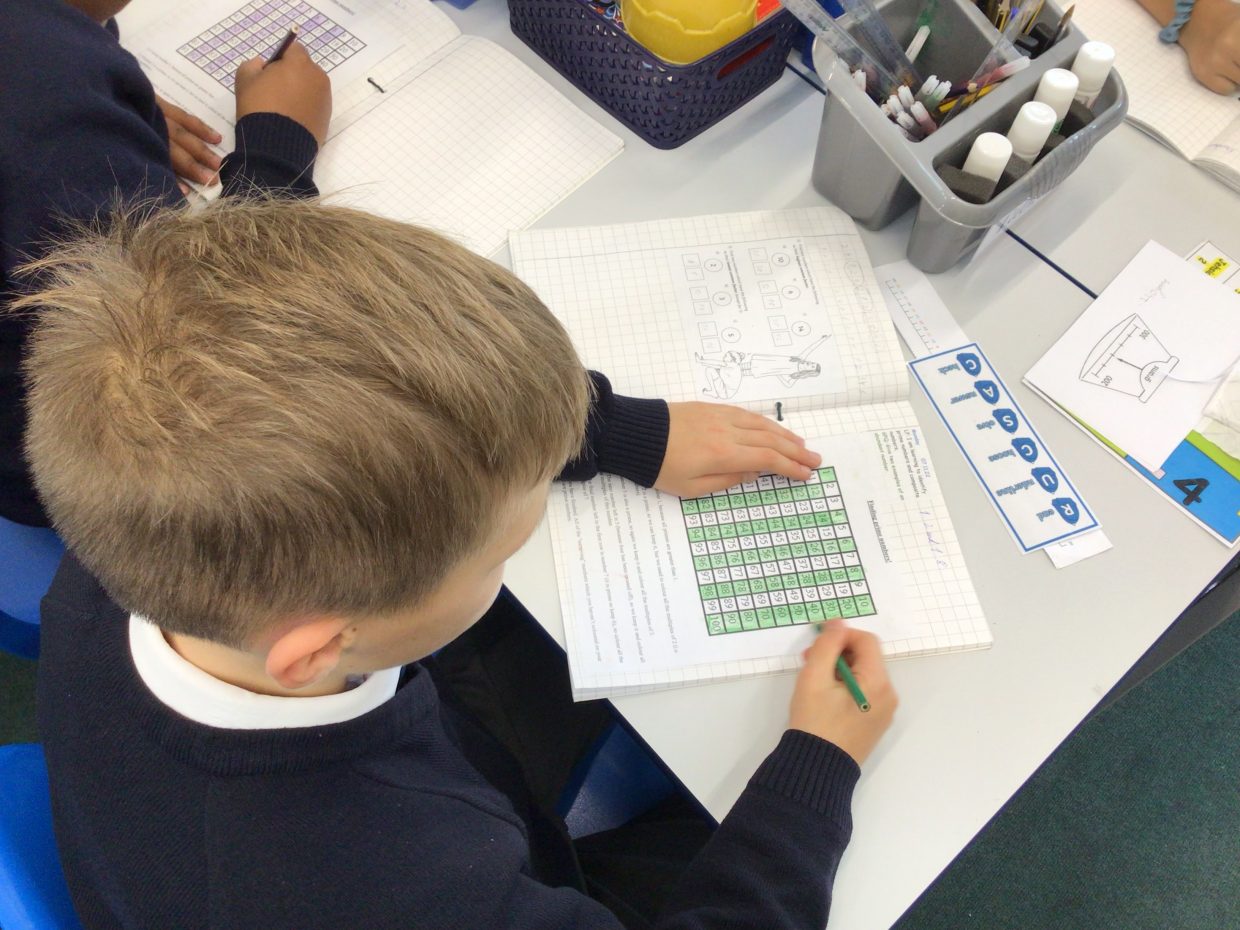The National Curriculum states that pupils should be taught to:
identify multiples and factors, including finding all factor pairs of a number, and common factors of two numbers
know and use the vocabulary of prime numbers, prime factors and composite (non-prime) numbers
establish whether a number up to 100 is prime and recall prime numbers up to 19.
Therefore, Year Five have been learning about multiples, factors, prime numbers and prime factors. Here, the children are creating a table that will help them identify prime numbers less than 100.
- First, we coloured in 1, because all prime numbers are greater than 1.
- Number 2 is a prime number. In fact it is the only even one. So we kept it, but coloured in all the multiples of 2 (i.e even numbers).
- Number 3 is also a prime, so again we kept it and coloured in all the multiples of 3.
- The next number not coloured in was 5 (because 4 was already coloured in), so we kept it and coloured in all the multiples of 5.
- The final number left in the first row was 7 (it’s prime so we kept it) and coloured in all the multiples of 7.
- FINISHED! All the ‘surviving’ numbers that are not coloured in on the grid are PRIME NUMBERS!
All the coloured in numbers are COMPOSITE NUMBERS!
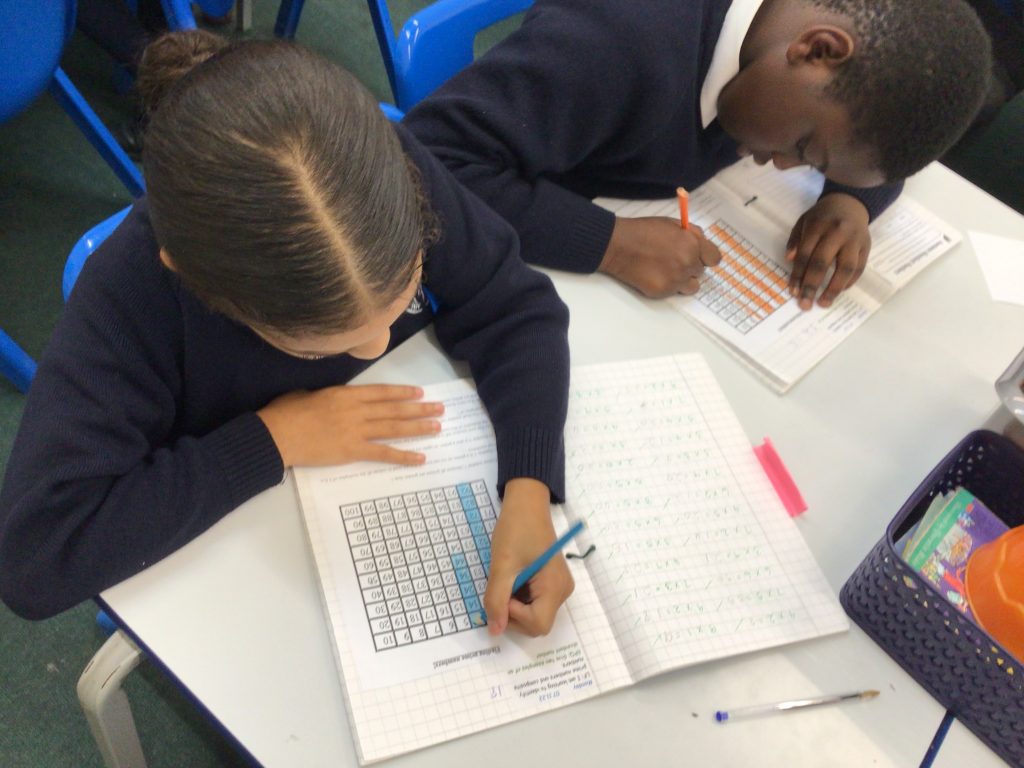
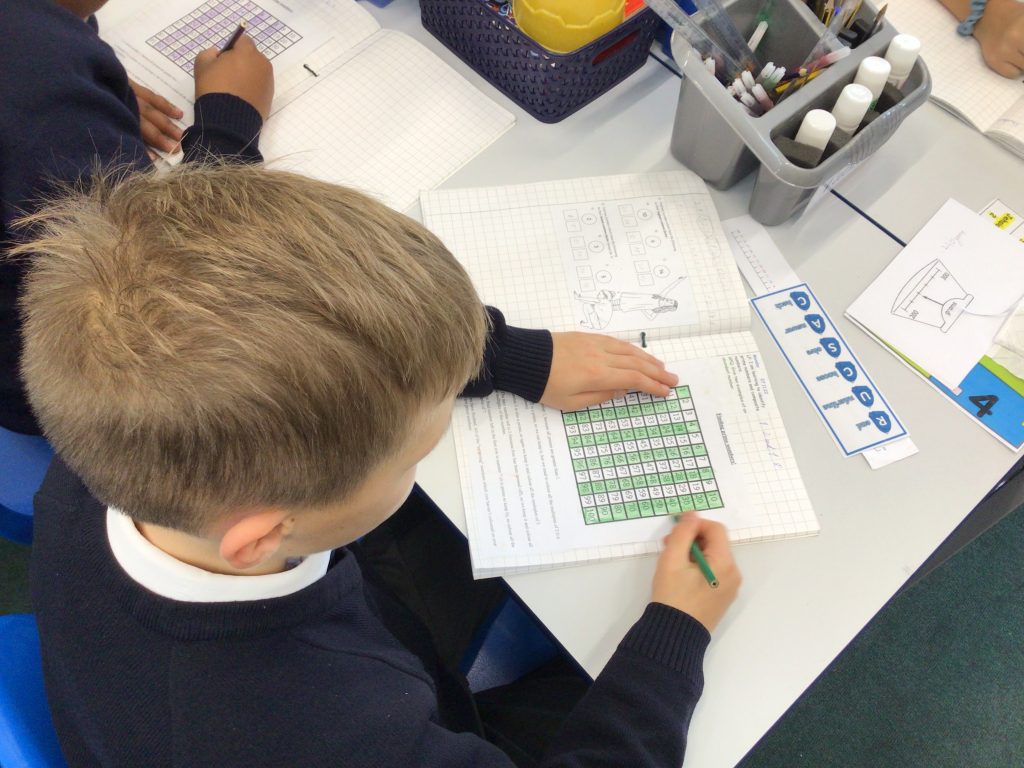
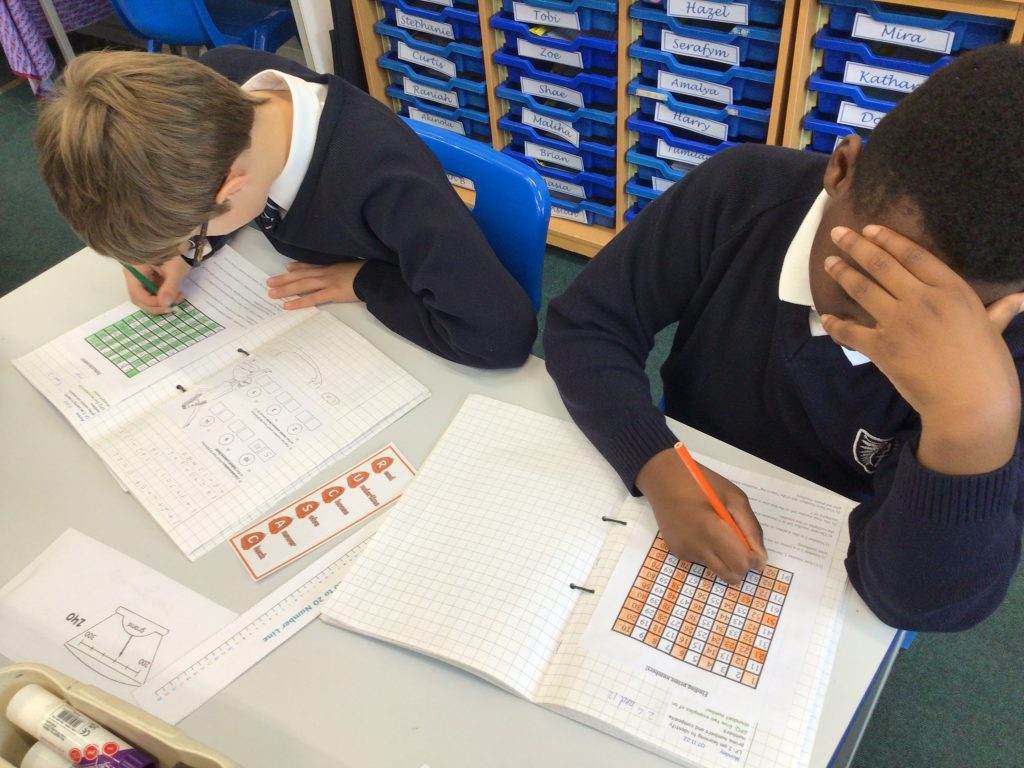
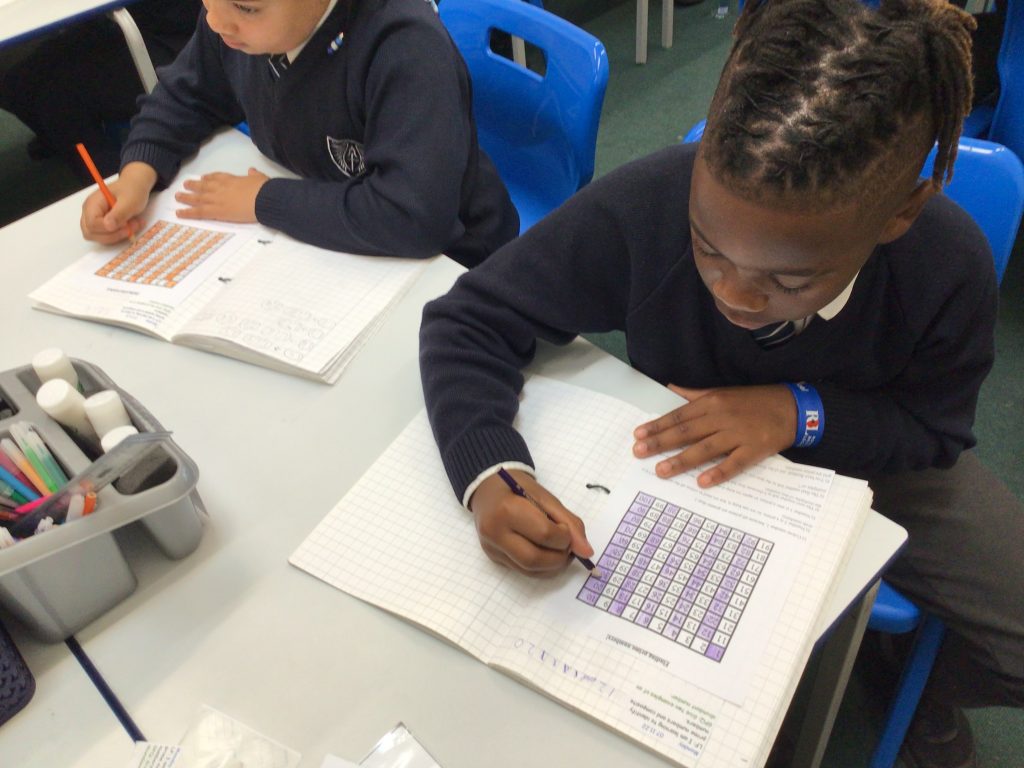
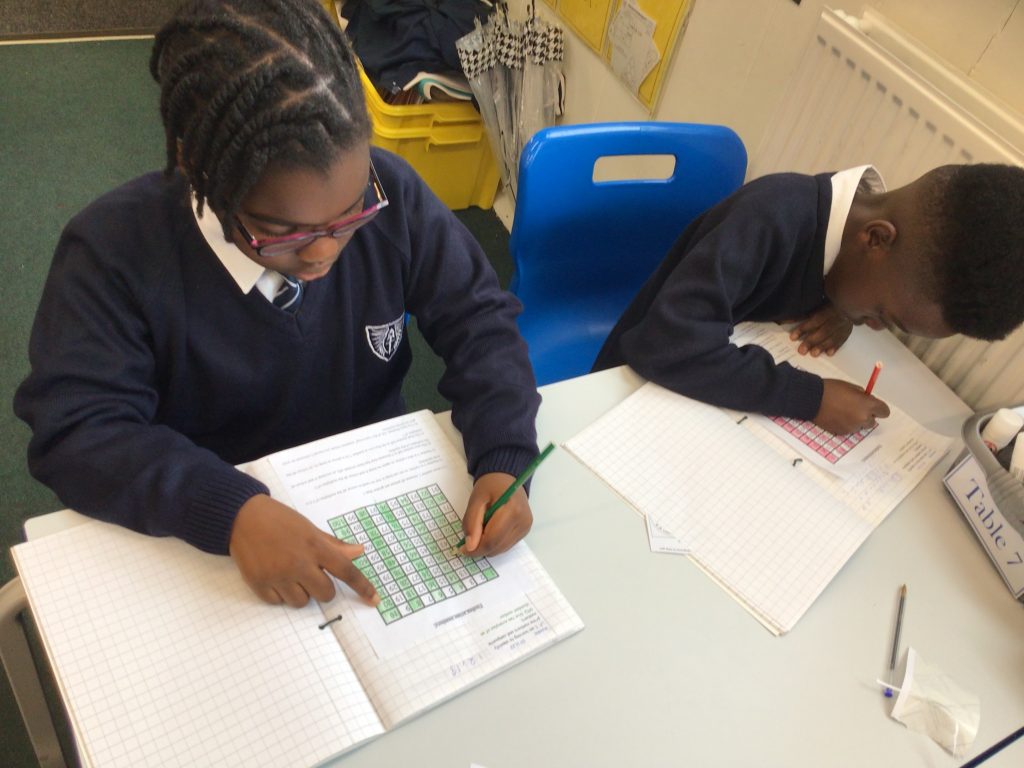
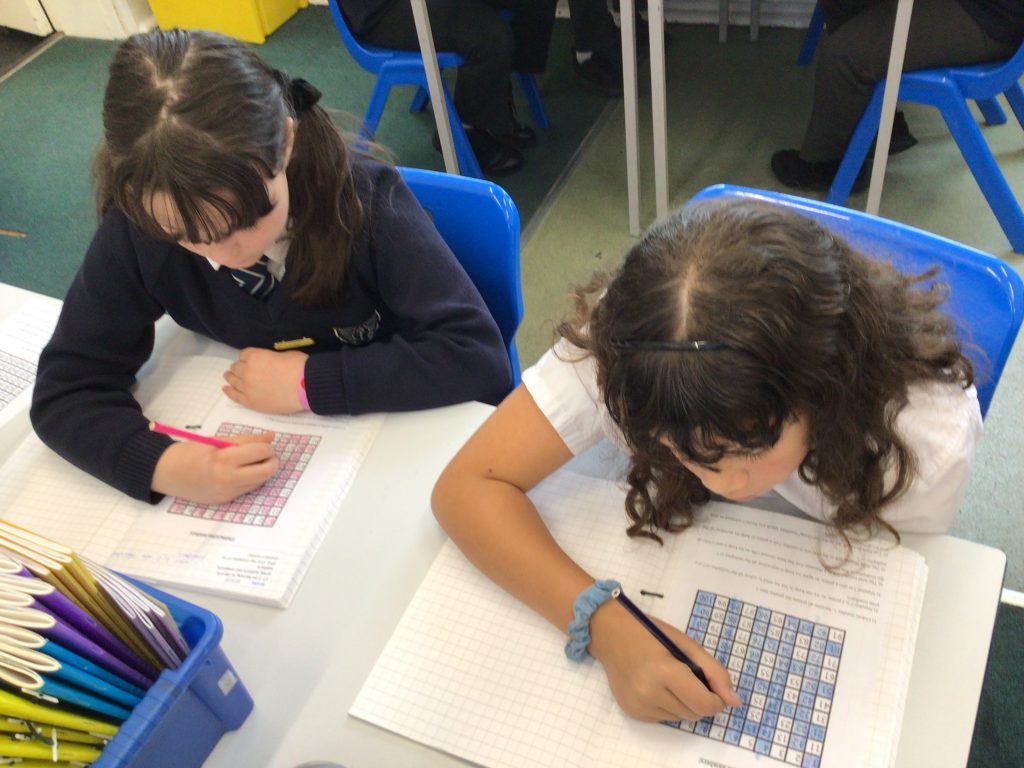
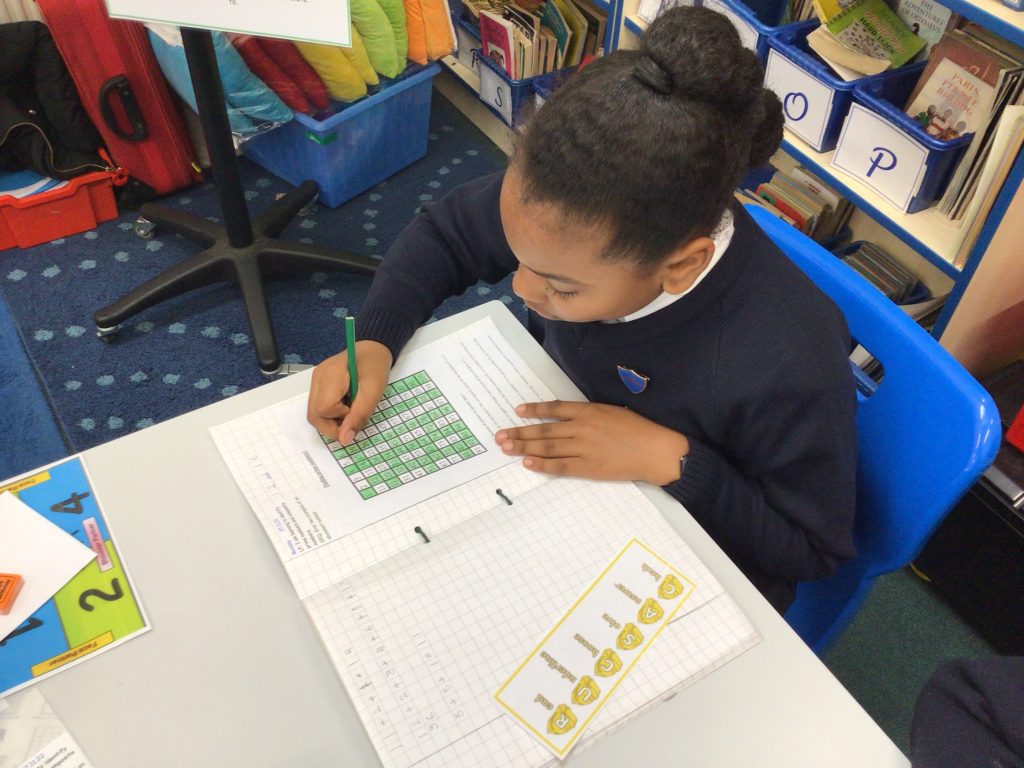
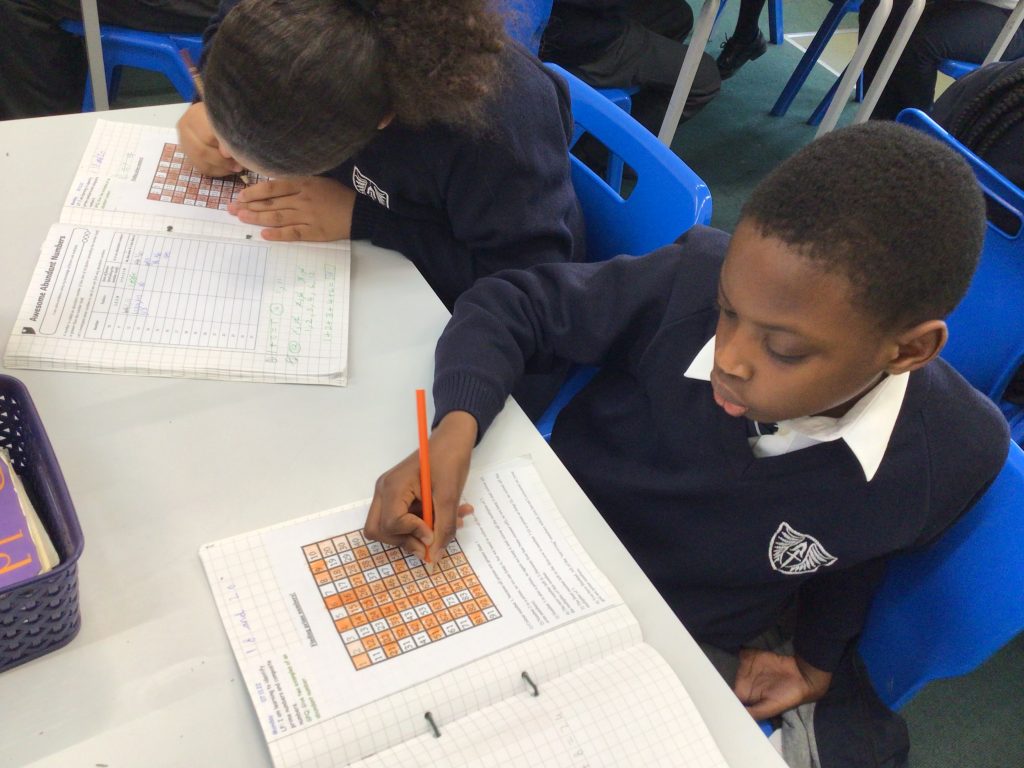
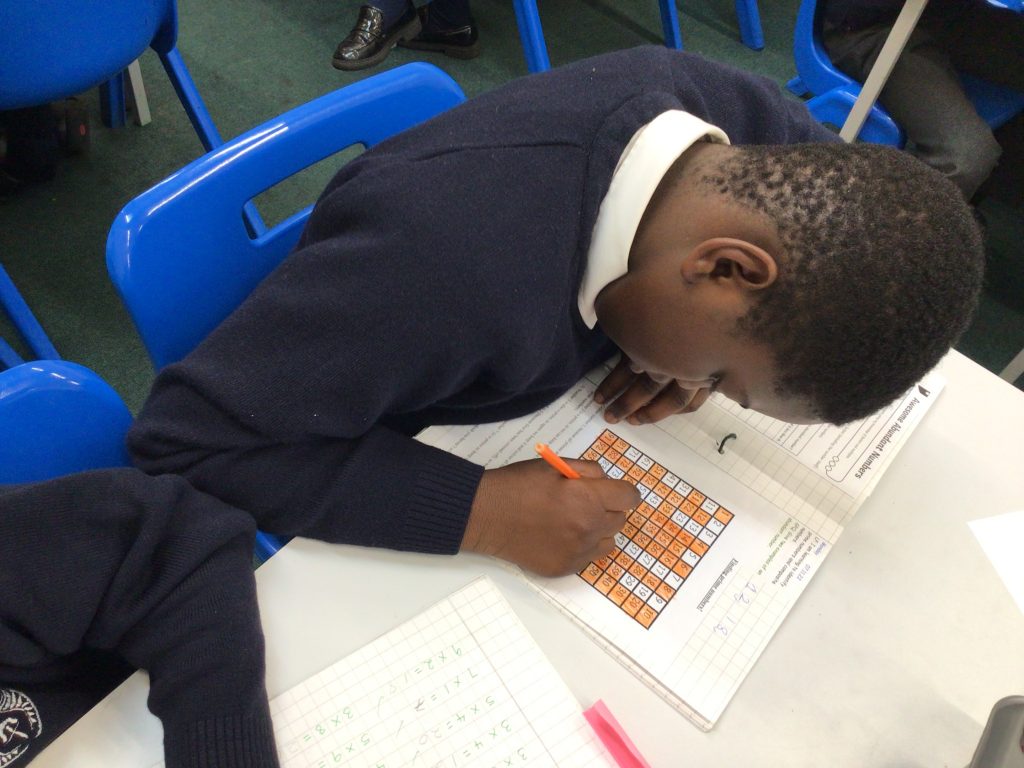
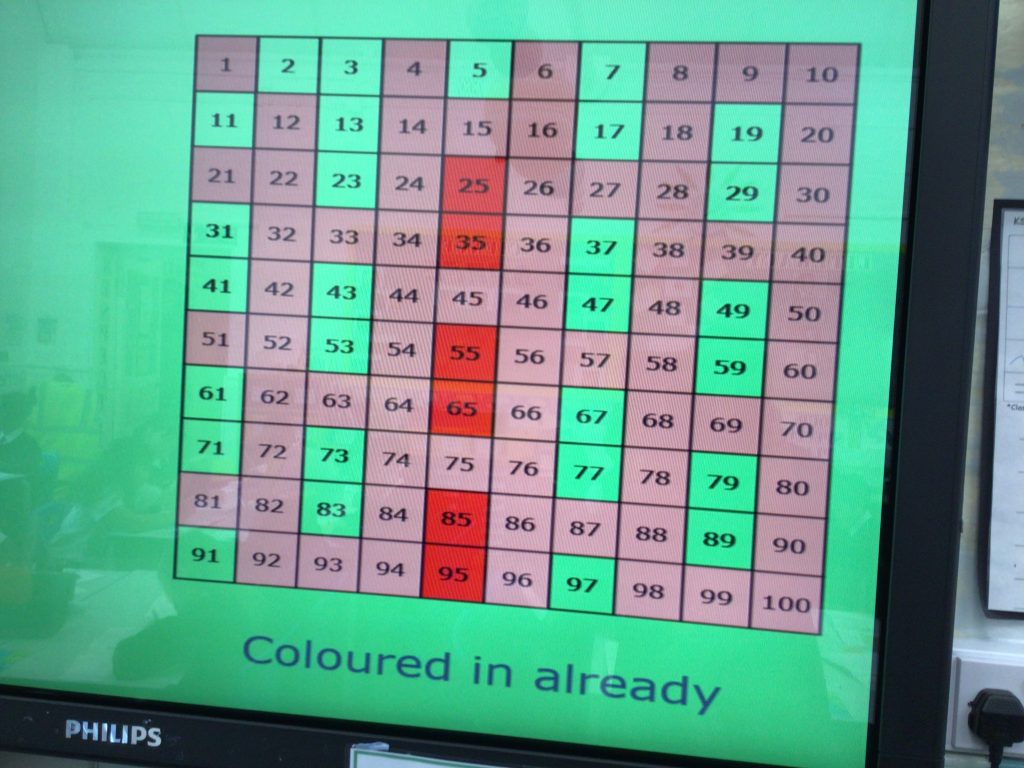
There you have it. There are 25 prime numbers between 1 and 100! Well done Year 5.
Did you know that whole numbers that are not prime numbers are called composite numbers?
We hope you have learnt something new from our blog today.
